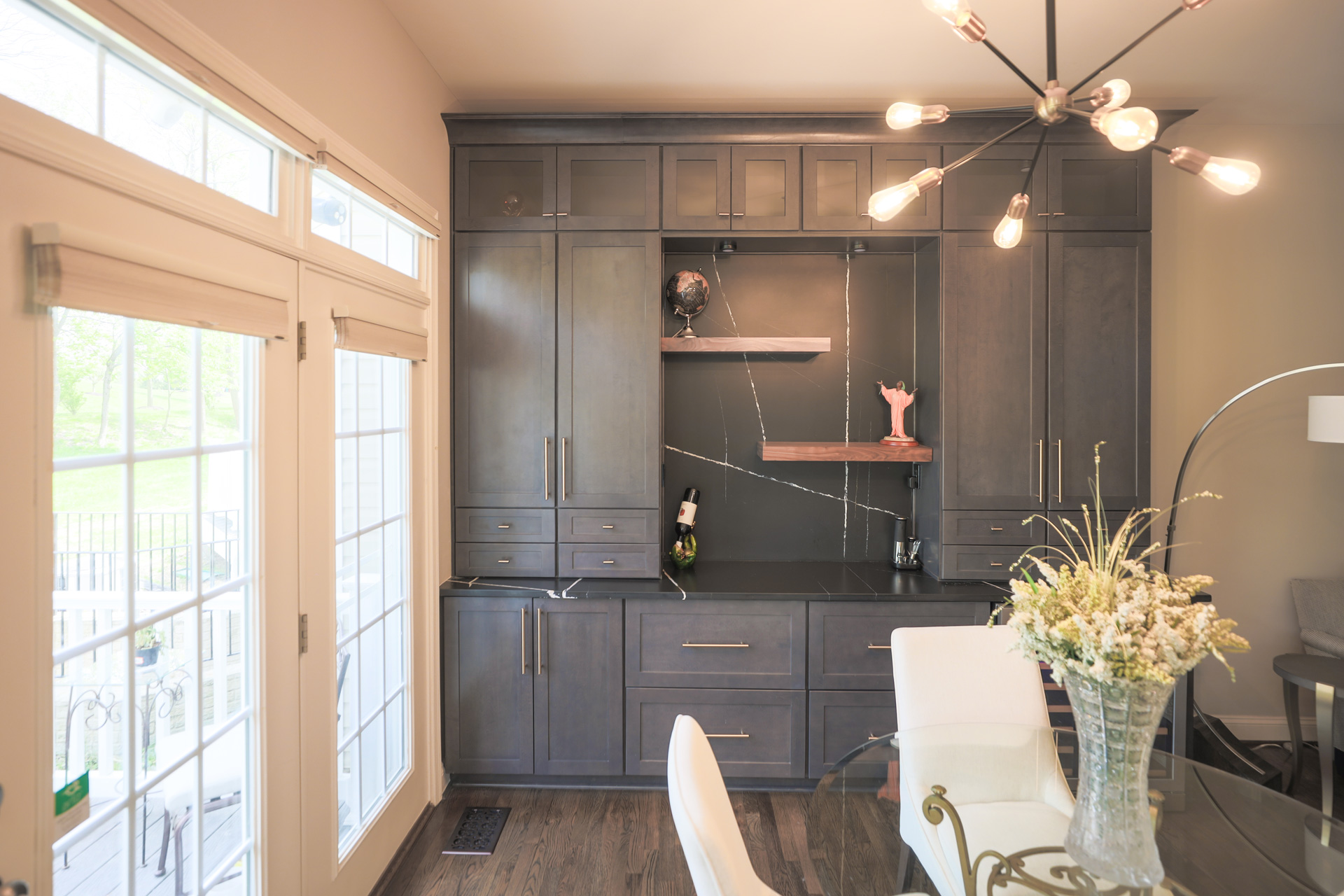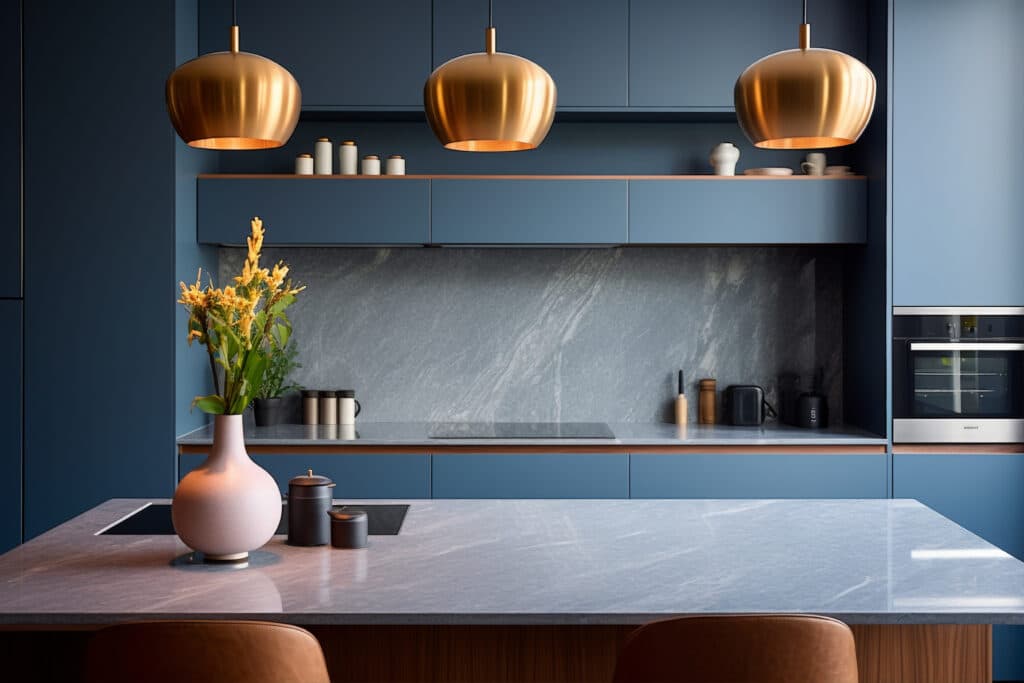
15 Kitchen Lighting Mistakes You Should Avoid
When it comes to creating a warm and welcoming kitchen, lighting plays a crucial role. However, many homeowners fall into common traps, resulting in a space that’s less than ideal. This blog post will guide you through 15 kitchen lighting mistakes to watch out for and offer practical solutions to each.
Contents
- Overcoming Kitchen Lighting Mistakes: Insufficient Lighting
- Overlooking Task Lighting
- Improper Placement of Lights
- Ignoring Dimmer Switches
- Wrong Color Temperature
- Mismatched Fixtures
- Overly Bright or Glaring Lights
- Neglecting Under-Cabinet Lighting
- Inadequate Ceiling Lighting
- Ignoring Natural Light
- Inconsistent Color Rendering
- Forgetting About Lighting Controls
- Inadequate Lighting Over Seating Areas
- Not Layering Lighting
- Ignoring Energy Efficiency
- Consulting a Lighting Designer
- Frequently Asked Questions
- Question 1: How can I update my kitchen lighting without a major renovation?
- Question 2: Can smart bulbs be used in any light fixture?
- Question 3: How do I choose the right size pendant light for my kitchen island?
- Question 4: What is the best way to avoid shadows on my countertops?
- Question 5: How often should I replace my kitchen lights?
Overcoming Kitchen Lighting Mistakes: Insufficient Lighting
One of the most prevalent kitchen lighting mistakes is not having enough light. A dim kitchen can feel uninviting and even make everyday tasks challenging. To combat this, incorporate a combination of ambient, task, and accent lighting. Ambient lighting, like ceiling fixtures, provides overall illumination, while task lighting focuses on work areas such as countertops. Accent lighting can highlight architectural features or decorative elements, adding layers and depth to the kitchen’s design.
Overlooking Task Lighting
Task lighting, particularly under-cabinet lights, is essential for detailed activities like chopping and cooking. Relying solely on overhead lights can cast shadows on work areas. Incorporating task lighting ensures that these areas are well-lit, reducing eye strain and making food preparation safer and more enjoyable.
Improper Placement of Lights
Incorrectly placed fixtures is one of the important kitchen lighting mistakes that can cause shadows or create uneven lighting. This issue often arises with recessed lighting not aligned with countertops or when pendant lights are hung too high or low. Strategically position lights to eliminate dark spots and provide uniform illumination. It’s important to consider the layout of your kitchen and the height of the ceiling when planning light placement.
Ignoring Dimmer Switches
This is a quite common kitchen lighting mistakes that can be easily undermined. Dimmers add a layer of flexibility, allowing you to adjust the light intensity to suit different times of day and moods. Installing dimmer switches for various light sources can significantly enhance your kitchen’s ambiance and functionality. They are particularly useful for transitioning from bright task lighting during cooking to softer ambient light for dining.
Wrong Color Temperature
Guess what? Not paying attention to choosing a temperature of lightbulbs can also become one of the concerning kitchen lighting mistakes. The color temperature of light bulbs plays a significant role in the atmosphere of your kitchen lighting. Warm white bulbs (2700-3000K) create a cozy and inviting feel, ideal for entertaining or dining areas. Cool white bulbs (3500-4100K), on the other hand, provide clearer, more focused light, making them better suited for task-oriented areas like food prep and cooking zones.
Mismatched Fixtures
Combining different styles or finishes of lighting fixtures without a cohesive design plan can result in a disjointed look. To avoid this kitchen lighting mistake, select fixtures that complement each other and the overall style of your kitchen. Consider the color scheme, materials, and design motifs present in your space to guide your lighting choices.
Overly Bright or Glaring Lights
Very bright or glaring lights can create an uncomfortable environment, straining the eyes. This is often a problem with high-wattage bulbs or poorly diffused lights. To mitigate this, opt for diffused lighting fixtures that spread light evenly and consider bulbs with lower wattage. Directing light towards walls and ceilings can also soften its impact, making the kitchen more inviting.
Neglecting Under-Cabinet Lighting
Under-cabinet lighting not only aids in task performance but also adds a subtle aesthetic appeal to your kitchen. It provides soft, indirect lighting that can significantly enhance the look and feel of your kitchen, eliminating shadows under cabinets and illuminating your backsplash. Don’t overlook this valuable feature, which can transform the functionality and appearance of your countertops and workspace.
Inadequate Ceiling Lighting
While pendant lights and chandeliers add character, relying on them as the sole source of overhead lighting is one of the common kitchen lighting mistakes that can lead to insufficient illumination. Ensure your kitchen has a comprehensive ceiling lighting plan, which might include recessed lights, flush mounts, or track lighting, to provide a well-distributed light across the entire space.
Ignoring Natural Light
Natural light can dramatically enhance the ambiance of your kitchen. Utilize windows and skylights to bring in daylight, reducing the need for artificial lighting. Consider the placement of windows and opt for window treatments that allow you to control the amount of natural light entering the kitchen. This not only saves energy but also connects the space with the outdoors, enhancing its overall appeal.
Inconsistent Color Rendering
Different lighting sources can affect how colors appear in your kitchen. Poor color rendering can distort the true colors of your cabinets, countertops, and food, which can be particularly problematic in areas where food preparation occurs. Opt for lighting solutions that provide high color rendering index (CRI) values to ensure that the colors in your kitchen are accurately represented.
Forgetting About Lighting Controls
Modern kitchens benefit greatly from advanced lighting controls. Smart lighting systems allow you to adjust lighting levels remotely, set schedules, and even integrate with other smart home devices. This adds a layer of convenience and energy efficiency, allowing you to tailor your kitchen’s lighting to your daily routines and preferences.
Inadequate Lighting Over Seating Areas
In kitchens with dining tables or island seating, it’s important to have adequate lighting to create a welcoming atmosphere. Pendant lights or chandeliers over these areas can serve as both functional and decorative elements, providing focused light for dining while contributing to the overall style of the space.
Not Layering Lighting
Layered lighting is key to a versatile and dynamic kitchen. Combining ambient, task, and accent lighting creates depth and enhances the functionality of the kitchen. Each layer serves a different purpose and when used together, they create a harmonious and flexible lighting scheme that can adapt to various activities and times of day.
Ignoring Energy Efficiency
Energy-efficient lighting options, such as LED or CFL bulbs, are not only environmentally friendly but also cost-effective in the long run. These bulbs consume less energy and have a longer lifespan compared to traditional incandescent bulbs. By choosing energy-efficient lighting, you’re making a smart investment for your kitchen and the planet. Consider taking a look at our blog about kitchen lighting cost, by clicking here.
Consulting a Lighting Designer
If you’re uncertain about how to effectively illuminate your kitchen, consulting with a lighting designer can be invaluable. They can provide expert advice tailored to your kitchen’s specific needs, helping you avoid common kitchen lighting mistakes and create a well-balanced, functional, and aesthetically pleasing lighting plan.
Avoiding these kitchen lighting mistakes can dramatically improve the look and feel of your kitchen. Good lighting is not just about functionality; it plays a key role in the aesthetic appeal and atmosphere of your kitchen. With the right lighting, your kitchen can become a more inviting, efficient, and enjoyable space.
For more useful tips, kitchen trends, and design inspiration, follow us on Instagram at kitchenandbathshop. Stay tuned for our next post where we’ll explore more home improvement ideas and help you create the kitchen of your dreams!
Frequently Asked Questions
Question 1: How can I update my kitchen lighting without a major renovation?
To update your kitchen lighting without a major renovation, consider adding or replacing under-cabinet lights, installing new pendant lights over islands or dining areas, or swapping out old bulbs for energy-efficient LED options. These changes can significantly impact the ambiance and functionality of your kitchen.
Question 2: Can smart bulbs be used in any light fixture?
Yes, smart bulbs can be used in most standard light fixtures. However, it’s important to check the bulb’s base type and size to ensure it fits your fixture. Additionally, some smart bulbs require a hub for connectivity, while others connect directly to your home Wi-Fi network.
Question 3: How do I choose the right size pendant light for my kitchen island?
To choose the right size pendant light for your kitchen island, a general rule is to measure the width or diameter of your island and subtract 12 inches. This ensures a balanced look, providing adequate space between the edge of the island and the pendant lights. For larger islands, consider multiple pendants to ensure even lighting.
Question 4: What is the best way to avoid shadows on my countertops?
The best way to avoid shadows on countertops is by incorporating task lighting, such as under-cabinet lights, which illuminate the work surface directly. Ensure that these lights are positioned at the front edge of the cabinet to cast light evenly over the countertops, minimizing shadows.
Question 5: How often should I replace my kitchen lights?
The frequency of replacing your kitchen lights depends on the type of bulbs and fixtures you use. LED bulbs, for example, have a much longer lifespan compared to traditional incandescent bulbs. Generally, replace bulbs when they burn out or if you want to upgrade to more energy-efficient or aesthetically pleasing options. Fixtures may last longer but consider replacing them if they no longer fit your kitchen’s style or if they’re damaged.

